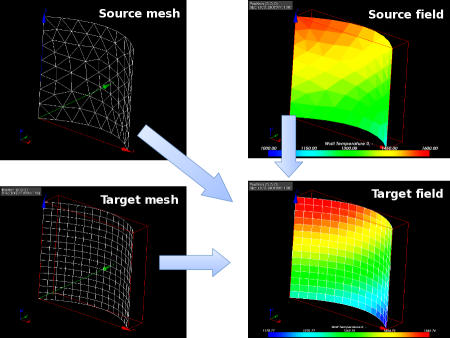Version: 8.3.0
The InterpKernel algorithms are part of the MED tool suite. They answer to the following basic problem : given a source mesh  , a source field
, a source field  and a target mesh
and a target mesh  , reconstruct a field
, reconstruct a field  that uses
that uses  as a support. The InterpKernel suite gives a number of possibilities to compute the target field, depending on a variety of user constraints.
as a support. The InterpKernel suite gives a number of possibilities to compute the target field, depending on a variety of user constraints.

Two different APIs are available depending on whether you run sequentially or in parallel:
ParaMEDMEM distributed fields (ParaFIELD), which is also based on the algorithms of the InterpKernel library.The following space/mesh dimensions are covered:
The interpolation is performed either by:
More complex treatments are also available:
Finally the following types of spatial discretization combinations are supported:
Remember that whatever the situation you face, you must always specify whether the field represents an extensive or intensive physical quantity through the nature attribute of the field.
TODO, list setOption, setIntersectionType, etc ...